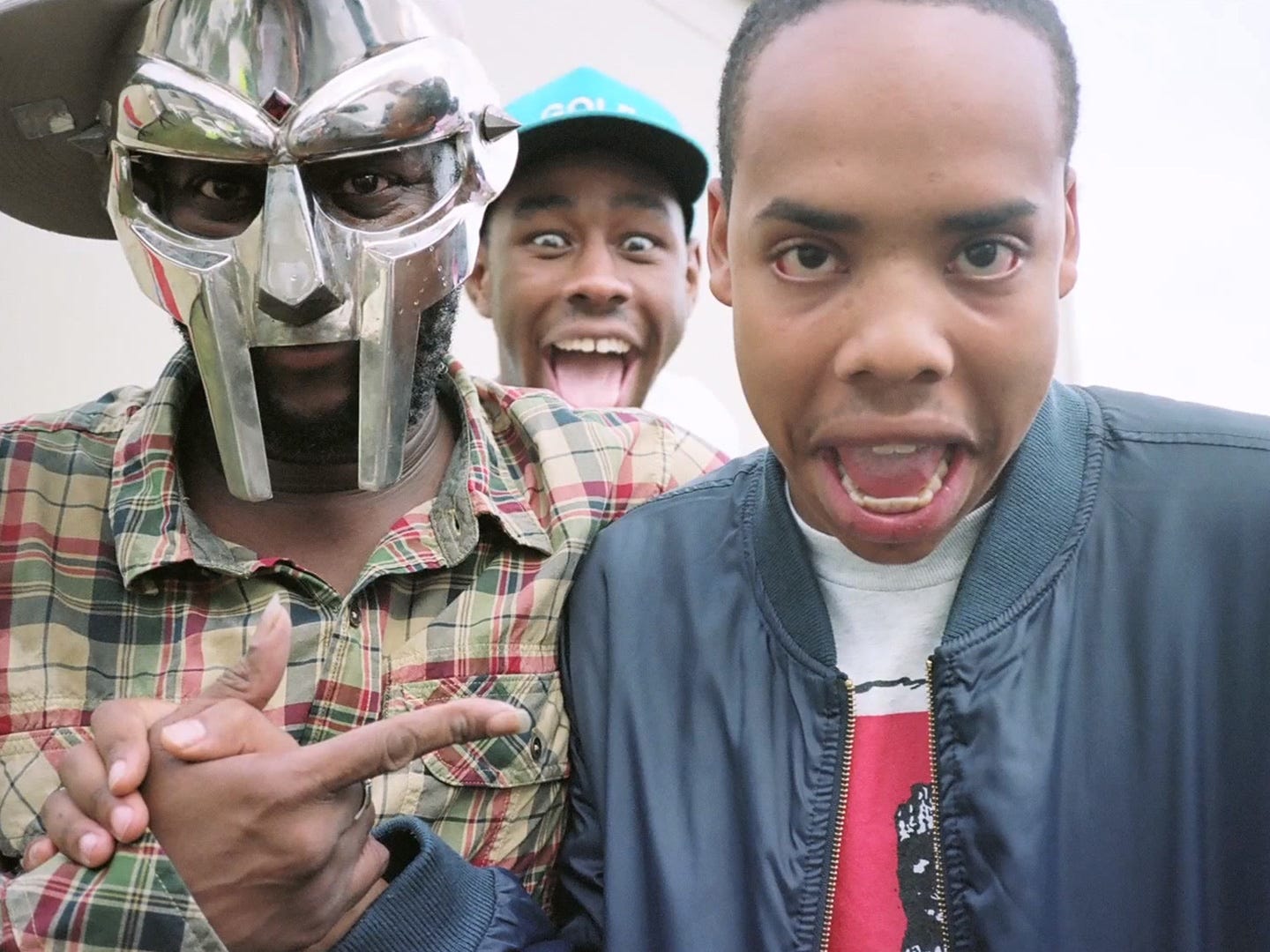
Writing Boys —
, , & — is a community focused on writing for ourselves and each other.Our love-letter series “Cypher” is inspired by “Echo,” an essay co-authored by Kiese Laymon, Mychal Denzel Smith, Darnell Moore, Marlon Peterson & Marshall Green from Laymon’s book, How to Slowly Kill Yourself and Others in America.
Two years ago, in our first installment of “Cypher,” we wrote love letters to each other about growing up as Black men raised by Black men. Last year, we wrote about departure albums. This year, we’re exploring musical lineages.
For future drops, please subscribe below:
Alex
Dear Koku,
Around this time two years ago, when we interviewed Hanif Abdurraqib for our podcast, I didn’t expect us to talk about lineage as much as we did. But it ended up being a central part of the conversation.
“Lineage is not always built through direct contact,” says Hanif. “It’s built through an ongoing contact with the reality that someone’s life is built before you.”
As we examine this ongoing reality within music, I can’t think of a better place to start than where we all began: our mothers.
People have been curious about superstars and their moms for years. Almost forty years ago, Cher’s mother, the late Georgia Holt, published a book called Star Mothers: The Moms Behind the Celebrities, which inspired Superstars and Their Moms, the TV series airing from 1987-88 that Holt was a co-executive producer for.
Stevie Wonder was a guest on the series’ second season where he dotes on his mother Lula Mae Hardaway.
“She’s like brown skin,” says Wonder while sitting next to her at the piano. “The beauty of her outwardly could never compare to inwardly, but yet the beauty of her outwardly is as beautiful as anyone in the world.”
Wonder’s adoration and reverence for his mother reminds me of the scenes of Kanye and his mom, Donda West, in the Netflix docuseries jeen-yuhs: A Kanye Trilogy. The smiles that engulf their faces when Kanye raps “Hey Mama” to Donda while making sure the camera catches their love.
When I consider the musical descendants of Wonder and West, Tyler, The Creator is the poster child. His musicality and love for chords are borne, in part, from sitting at their feet. Not only did Tyler confess to Stevie when they first met, “I be stealing your chords,” but he has collaborated with Kanye several times and said he cried when he heard the chords on West’s “Violent Crimes.”
Following in the footsteps of Wonder and West, Tyler also lets his mother’s love lead the way on his latest album CHROMAKOPIA. It begins with a voice recording of his mom, Bonita Smith:
“You are the light
It's not on you, it's in you
Don't you ever in your motherfucking life dim your light for nobody”
In reviewing CHROMAKOPIA, writer Dylan Green refers to Smith as the album’s “voice of reason.” Recordings of her advice are heard on several songs, including a jarring confession on “Like Him” and an emotional closing to the album where Smith addresses Tyler through tears:
“Real shit, I'm proud of you
I'm proud of you, bro
Like, you just never cease to amaze me, like, you just—
There's no words right now [for] how I feel
Do your thing, just keep, keep shinin'”
It’s clear how closely Tyler heeds his mother’s words. And as someone who has followed Tyler’s career for over a decade, I couldn’t hear his mom’s advice without thinking about his longtime friend and former Odd Future member Frank Ocean, who used a voicemail from his good friend’s mom, Rosie Watson, for the track “Be Yourself” on his 2016 album Blonde.
When the album first released, most of us assumed the voice advising Frank not to drink alcohol or use drugs was his mother, especially since Watson ends her voicemail with a classic mom sign-off: “This is mom, call me, bye.”
But even though Watson isn’t Frank’s birth mother, the voicemail underscores how much he values motherly advice, especially from Watson. Her guidance is so important to him that he features another one of her voicemails on “Not Just Money” from his debut album Channel Orange. Watson’s voicemails are referred to as “the stuff of legends” in an interview she did for Ocean’s Boys Don’t Cry magazine that served as a companion to Blonde.
As you and I have both navigated therapy, I know we pay special attention to how our parents have shaped us. Our first time writing these letters highlighted the relationship we have with our dads. And I know, for me, how I approach my relationship with my parents, and especially my mom, has evolved as I’ve gotten older.
Neither Tyler nor Frank invented the album skit or having maternal figures on a project, but how they invited these women into their work makes me think about the advice I’ve received from my own mom and how I used to want to reject it whenever she offered it. And still, I feel that urge rising within me. But now, I’m learning to take a pause and remember her advice comes from a place of love. She wants what’s best for me. And even if she doesn’t fully understand all that’s on my plate, that’s an opportunity for me to share more of my life with her.
In Watson’s interview for Boys Don’t Cry, she says, “I think when you call someone, you should leave a voicemail for them.” Later, she adds about her birth son Jonathan and her play son Frank, who she calls Lonny, “I want them to always remember to just be themselves, they don't have to be the type of man described in a rap song.”
Tyler’s mom delivers similar advice on the CHROMAKOPIA track “Take Your Mask Off”:
“Keep that shit one hundred with you, with yourself
You don't have to put on no costume
You don't ever have to lie to kick it”
At the end of the day, we are our mothers’ sons. Before we were anything else, that’s who we were—and that’s who we are. You’re part of my lineage just as I’m part of yours, and I offer you the same encouragement my mom recently texted me: “Whatever you do, keep striving. I am always one of your biggest cheerleaders!!!”
This is Alex, call me, bye.
Koku
Dear Julius,
As producers, we both understand how much sound transcends through time. This goes beyond the fact that artists like Aretha Franklin, Marvin Gaye, Nina Simone, and Stevie Wonder have albums that, to this day, are still poignant and have an everlasting replay value to them. What we hear when we listen to music is a snare taken from a drum break in the middle of The Honey Drippers’ “Impeach the President,” which was used by De La Soul on “Ring Ring Ring (Ha Ha Hey)” or hearing Thundercats’ “Them Changes” and know that it was built upon The Isley Brothers' “Footsteps In The Dark” drum loop, which Ice Cube also used on “It Was a Good Day” along with a vocal sample.
Hip hop directly builds upon artists from the past. There is a line in Jay-Z and Kanye West's collaborative album, Watch The Throne, on the song “The Joy” (produced by Kanye West and Pete Rock) where Jay-Z says:
“This is my mama's shit
I used to hear this through the walls in the hood when I was back on my pajama shit (Uh-huh)”
The “this” Jay-Z refers to is the sample in the song “Makings of You” by Curtis Mayfield, which is the main sample chop throughout the song. The image Jay-Z paints when reminiscing about his time back in Marcy Projects is one of nostalgia since he is revisiting and rapping on a track he used to hear in his childhood. Not many other music genres can invoke a feeling of nostalgia and give it new life by reinterpreting it into a whole new song.
Another great example is Kendrick Lamar’s “luther,” which samples Luther Vandross and Tammi Terrell's duet “If This World Were Mine,” reinterpreting the song both in the sample and the lyrics with Kendrick saying:
“If this world was mine, I'd take your dreams and make 'em multiply
If this world was mine, I'd take your enemies in front of God”
Kendrick keeps the integrity of the sample while inserting his spin on the original lyrics:
“If this world were mine, I'd place at your feet
All that I own, you've been so good to me”
Primarily produced by Sounwave, “luther” shows how much a producer can take a sample and manipulate it in ways only hip hop can. Sampling has been one of the foundational pillars of hip hop since its genesis. Artists like Pete Rock are critical progenitors of the craft. However, between Peter Rock and Sounwave, there is an artist whose legacy in hip hop is unanimously seen as one of the greatest of all time.
James Dewitt Yancey, professionally known as J.Dilla, was a producer from Detroit, Michigan, who gained prominence in the early 2000s, serving as the main producer for the hip-hop group Slum Village. J. Dilla's production captivated me, especially when I first started learning how to produce.
Dilla strayed away from the production standard at the time, which heavily relied on drum loops aligned with the track's tempo. What Dilla was able to do was treat his sampling and percussion as if he were playing actual drums. This production style completely shifted the limits many producers believed were there, unintentionally creating the “Detroit Swing.”
Dan Charnas writes about this inception and evolution of sounds. In Dilla Time, he writes:
“…this predictable/unpredictable rhythm made its way outward among James’s mentors, collaborators, and admirers, they started giving it their own names: that “Jay Dee swing” or “bounce” or “hump,” designations that would shift to terms like “Detroit swing” a few years later when some of his protégés began using the time-feel.”
I think back to when you asked me to lay some drums for an unreleased track you had created a while back. The track you sent had your vocals accompanied by a guitar riff. You left me to my own devices to add whatever I like. I immediately thought of how D’Angelo and Dilla worked together. Although I would never aggrandize myself to think I was J.Dilla, I knew I had to get into that mindset to add what I felt would fit this track and find a way to make my drums swing the same way Dilla does.
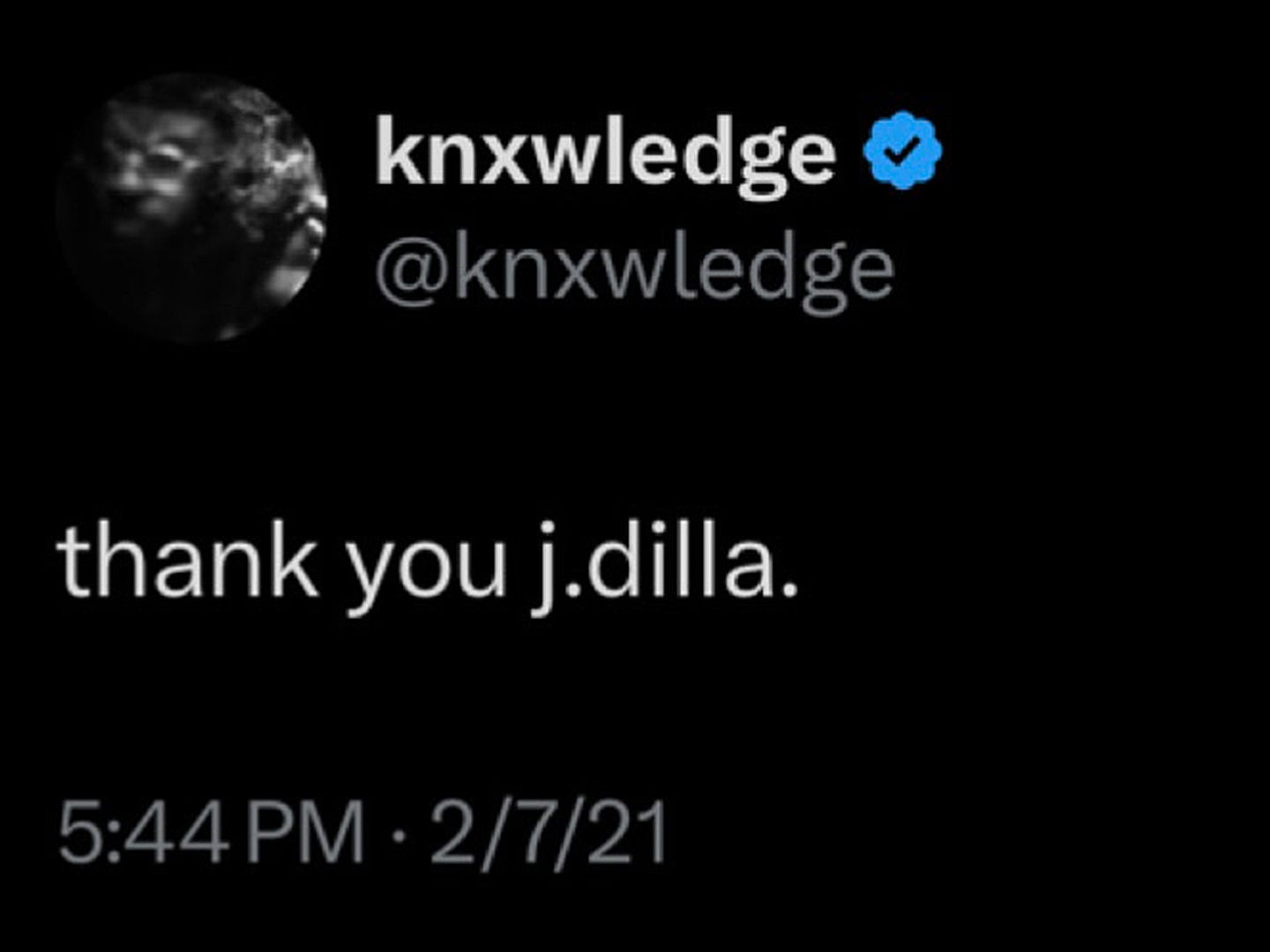
As I mentioned, J.Dilla found a way to use both the sample and drums uniquely, having an extraordinary ability to manipulate the samples to say whatever he likes. On the track “Stop,” Dilla samples vocals from Jadakiss. In the sample, Jadakiss is heard saying, “Is death real?” It’s an eery peek into Dilla’s mind because during the creation of the song and his album, Donuts, that surrounds it, he was in the hospital battling a serve illness while approaching his final days.
What made Dilla so extremely skilled was the vocal sample from Jadakiss, which actually says, “Is that real?” It stems from Jadakiss' song “Why.” This isn’t the only example of Dilla’s use of vocal samples to directly talk to his family, friends, and listeners. Throughout Donuts, there are vocal chops and voices that appear to speak to the intended listener, telling his mother not to cry on “Don’t Cry” or his brother John, professionally known as Illa J, to “do it” or to follow his dream on “Waves.”
A lot of these techniques come from Dilla’s background as a DJ. The vocal chops placed between tracks allowed him to talk to listeners in a way that he couldn’t do through lyrics or instrumentals. When I think about the lineage and how this type of production gets passed down, much like spoken word, I think of Knxwledge, who built upon and perfected this type of production. Knxwledge’s production style is just as sporadic as J. Dilla’s.
In an article written by Peter Holslin, he writes:
“Knxwledge has already earned comparisons to the incomparable J Dilla with a barrage of barely legal Bandcamp releases. One beat (“so[rt]”, from the relevnt.b/sde_LP tape) even got repurposed on Kendrick Lamar’s To Pimp a Butterfly record.”
Knxwledge’s production style has grown past his influences and is seen through all the music he has released. You will find vocal snippets from movies, shows, and other albums across his albums. On the song “Noflowrs[instrw]” on his album Hud Dreams, he samples phrases from a Nardwuar interview with YG. Coincidentally, this beat uses a J.Dilla drum loop from Dillatronic.
I still listen to my mama’s shit, and I take what I’ve heard from when I was a child, and it influences me to create beats that I think Dilla and Knxwledge would like. Julius, we previously talked about how D’Angelo was a huge inspiration for you. I think about how Dilla worked with D’Angelo and how Dilla was heavily influenced by his album Voodoo.
I also think about how Knxwledge has worked with Anderson .Paak to make some of the best R&B music of the last decade. The connection between these is heard through the music.
As Knxwledge honors J.Dilla’s legacy through his production style, I hope one day we can make something that honors them as well.
Let's think about our group name.
Julius
Dear Alex & Koku,
You know when you meet that older kid on your block—summer camp, school, whatever—you lean into the shit they are into because it's cool.
I've always felt drawn to niggas who are eclectic—in taste, style, and musicianship.
Charles Ray Wiggins, the second youngest of 14 children, wanted to be a musician and make records. He learned some skills from his older siblings and built off of that. He started singing around town and, before his 18th birthday, he decided to try out for Sheila E’s backing band.
Wiggins got the gig and says Prince ran the band like a boot camp. His eclectic style and work ethic rubbed off on young Charles—so much so that he felt like a new person. He returned to his hometown of Oakland brand new and even changed his name: Raphael Saadiq.
Steve Thomas Lacy-Moya grew up a sheltered kid in Compton, California. While playing the video game Guitar Hero, he realized that he wanted to play the real thing. His musicianship got him into a high school jazz band crossing paths with the youngest sibling of another family: Jameel Bruner, the younger brother of producer, artist, all-around, weird-ass nigga—respectfully, Stephen “Thundercat” Bruner.
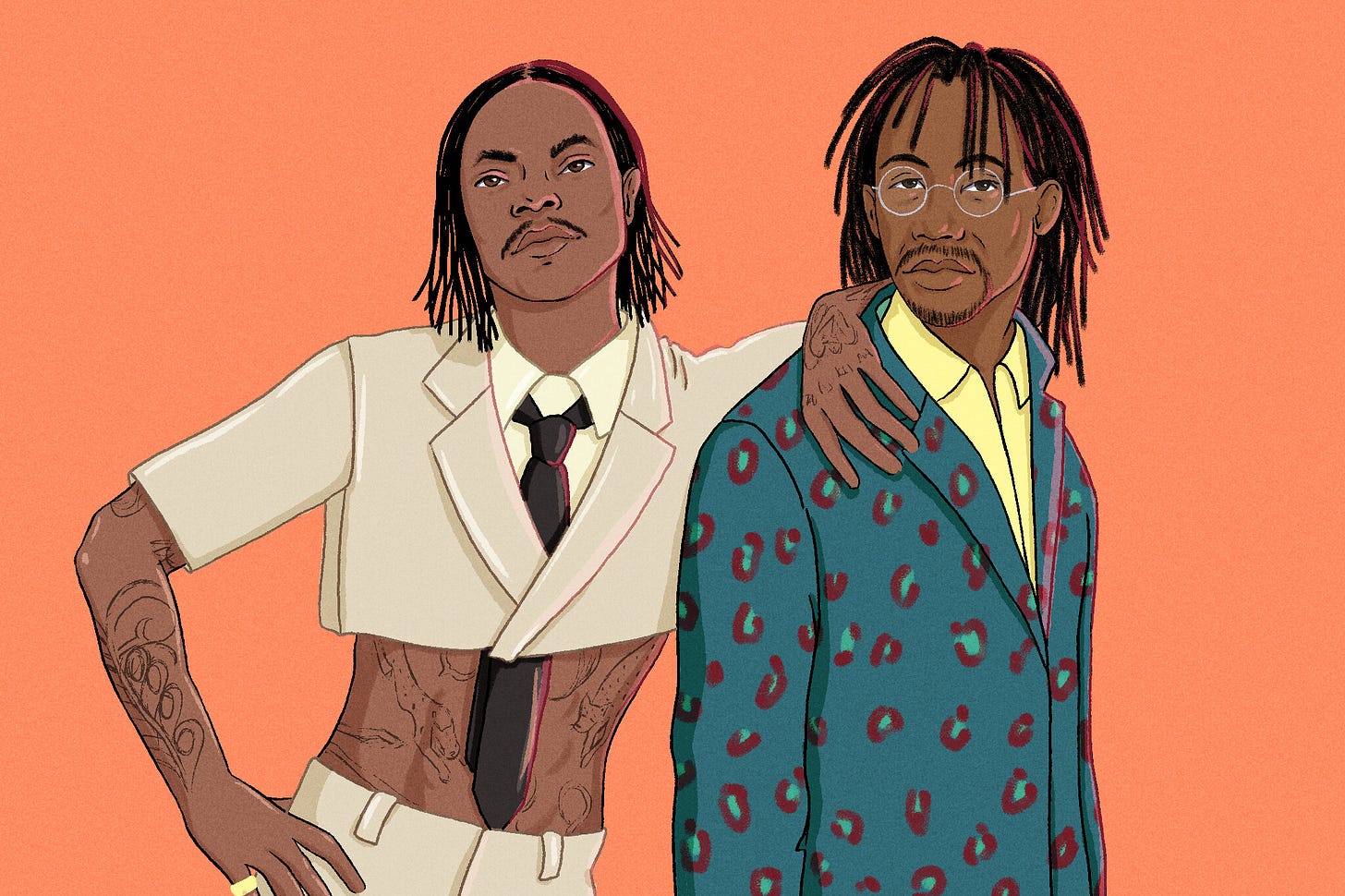
Jameel eventually would introduce Steve to the rest of the band he was playing keys for: The Internet. Steve was producing these unique-sounding productions on his phone and that solidified him as a force in the group.
Alex, you and I went to see The Internet in 2016. He wasn’t playing at that show because he was graduating from high school.
While working on his first solo album, Steve told Apple Music’s Zane Lowe that the first song on his debut album, “Only If,” has a Rogue Sitar on it because he was showing music to his friend in the car and someone walked by and screamed, "THAT SHIT IS BANGIN'!".
Steve realized that it was Saadiq who called for him, and they became friends. Him and Raphael Saadiq share music often. He heard a song with a Rogue on it, and he let him play his. He immediately went home and ordered one.
As I look at Saadiq's production credits, I see Lacy following in those footsteps as an artist-musician-producer and all-around eclectic nigga. I think, when you meet somebody who inspires you and has paved the way for you, it takes you back to seeing yourself as a student. Your continual growth is going to make your younger self proud. Raphael impressed Prince and now Steve is impressing Raphael.
Lineage is a form of love, especially when you get to learn from that person face-to-face. That doesn't always happen. When it does, we can look back at our younger selves and say:
“If I could travel through time,
I think I...
Would tell myself from
The past
You’ll be fine”
Cole
Dear Alex, Koku & Julius,
Our Writing Boys group chat dates back to 2022 when our first Cypher was released. Somewhere in the quarrel of blue and grey bubbles, a message I sent reads, “Our chat belongs in the Library of Congress.” I wish we had our countless conversations archived in folders so we could carefully trace back our moments of candor and silliness. Our collection of collective love shared amongst four Black men deserves cultural preservation.
We’ve been writing for our futures. When we decided to settle into this space together as Writing Boys, we never knew how good we would be together and for each other. Yes, there’s a writing lineage we are responsible for too, and I know that sounds like I’m placing a haunt over our trivial writer lives, but we never know whose eyes are watching us, whose ears are listening.
Daniel Dumile couldn’t have imagined the many pairs of younger eyes and ears absorbing him: Jo-Vaughn Scott, Thebe Kgositsile, Tyler Okonma, and Jaylah Hickmon, to name a few.
Translation: MF DOOM couldn’t have imagined the many pairs of younger eyes and ears absorbing him: Joey Bada$$, Earl Sweatshirt, Tyler, The Creator, and Doechii, to name a few.
And trust me, they were paying attention.
Joey Bada$$ showed us he was watching through “World Domination” (“Poo-Putt Platter”). Earl Sweatshirt proved to us he was listening with “Deerskin”(“ALL CAPS”). Tyler, The Creator closely looked on by evoking “Odd Toddlers” (“One Beer”). Doechii encapsulated DOOM during her performance on Late Night with Stephen Colbert, paying homage with a voiceover from him – “Hip hop has gone in a direction where it’s almost damn near 100% on everything besides the music.”
Koku, you said it best when you wrote about DOOM, “I can’t help but drone on about MF DOOM and his cartoonish approach to hip hop. He is an emcee with a flamboyant, yet elusive personality. His rhymes and flow break the traditional structure of a rap song and have a meta quality.”
The traits you described for DOOM can also be said about the artists he influenced. We don’t get Joey spewing off his quadruple-entendre rhymes, or Earl’s unorthodox flow, without Metal Face.
We remember the first time meeting the people we admired. At first, we may greet them with a cool, calm, and collected demeanor. But once we are out of sight, we relish in our giggly astonishment behind their backs. Alex, that’s how I felt when we first hung out.
There’s a video online of Earl and Tyler meeting MF DOOM for the first time in 2013 at Reading Festival. Before DOOM went on stage, he dapped up the Odd Future members, “I heard a lot about all y’all n****s,” said DOOM. The camera pans to a bewildered Tyler, and as DOOM walks away from the Odd Future members, Earl and Tyler can no longer hold in their excitement as they fanboy out together.
Lineage feels different from influence and inspiration. I can sift between the good and bad baggage from the forebearers who inspired me, but lineage picks the person. Lineage tells me I must carry the torch and, along with the torch, some curses and blessings will be attached to me regardless, as I move into the future.
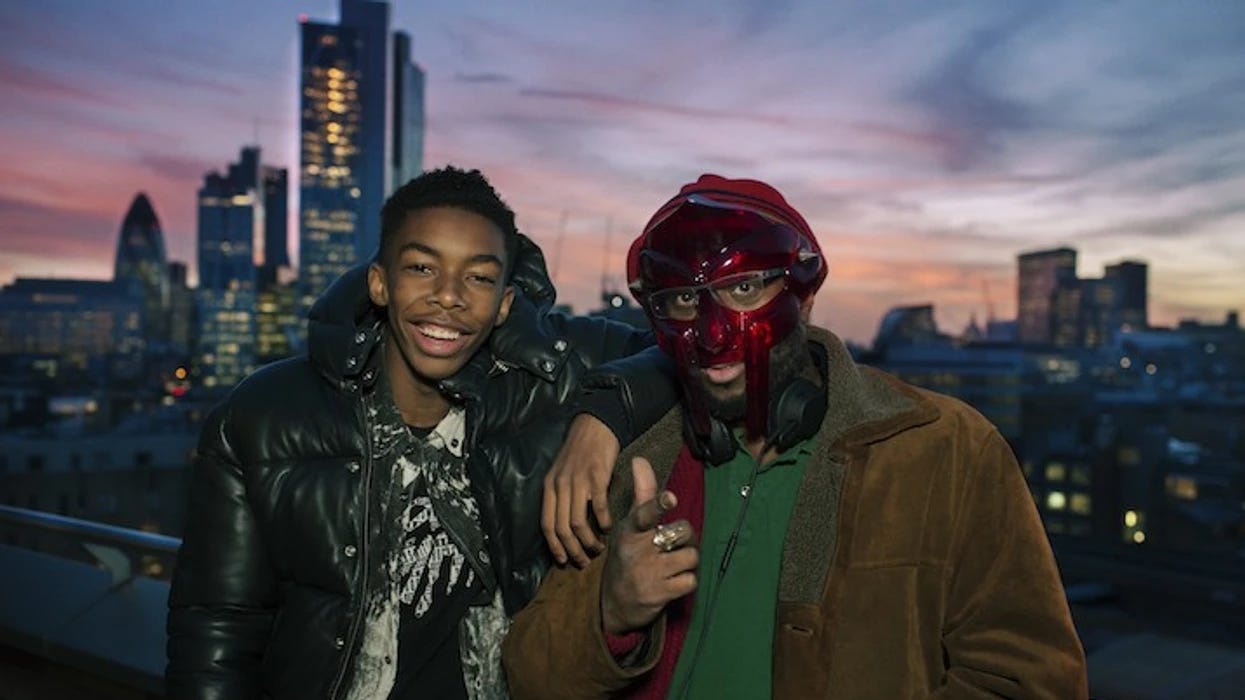
In 2013, another young rapper caught the attention of the supervillain. At just 16 years old, Bishop Nehru was invited to perform as the opening act for MF DOOM and Ghostface Killah in London, U.K. An invitation of a lifetime. And just like the MF-influenced artists mentioned earlier, Nehru embodied DOOM through “Elder Blossoms”(“Arrow Root”). DOOM appreciated Nehru’s homage the most because they collaborated to release an EP one full year after their first encounter. Nehru was picked to carry the torch.
XXL Magazine documented Bishop Nehru and MF DOOM’s collaboration project, NehruvianDOOM:
“I heard about him before I actually met him. Heard some of the music, [but] not too much. I met him, I’m like alright, [he’s] just a cat, [let’s] see what he got,” said DOOM. “But his spirit is good you know what I’m saying, he got a good aura with him. You know, he’s about his business.” Their connection was seamless.
I’m not writing to you guys to vaunt Nehru’s penmanship or describe how similar Nehru’s style is to the legendary DOOM. I’m writing to tell you how special it feels to be picked and chosen by people who want to see my future flourish. For the elusive MF DOOM to agree to work with an up-and-coming emcee in Bishop Nehru meant he wanted to see his future flourish, and Nehru understood this.
“This was somebody who I was really kickin’ it with. We was in the studio talkin’ about life,” said Nehru. “And he was talking to me like a grown man. It wasn’t on no shit where he was talkin’ to me like I’m some little n***a, and I was like 16.”
Fast-forward to 2025 from 2013, and the future of all the artists I mentioned has taken many positive turns. As it stands today, Tyler, The Creator landed his 5th straight number-one album with CHROMAKOPIA, Earl Sweatshirt last wrapped a successful UK/Europe tour, Joey Bada$$ was named Artist-in-Residence at NYU Clive Davis Institute of Recorded Music, and Doechii blessed her fans with a jaw-dropping performance on NPR’s Tiny Desk. Nehru’s career hasn’t quite shot off like his peers, but he’s still rapping.
JT, on your song “You Want To Dream?” from your latest project, DAMN BOY YOU GOT SOME SUN, I loved when you said, “I want to be known for more than just the music in me.”
In some semblance, I envision Nehru saying the same thing about wanting to be known for more than just a joint album with a hip-hop legend, but maybe that’s the blessing and the curse.
From a fair-weather hip-hop fan, it would seem like Bishop Nehru never caught his big break, but not many hip-hop artists can say they made a joint album with MF DOOM – an accomplishment many artists wish they could tell. And I’m guilty of wanting each of you men to catch your big break, but not many people can say they wrote love letters with their homies and put them out for the internet to read.
DOOM’s life is complete, but his lineage will continue through Nehru.
We’ll never forget when we were chosen by the people we love.







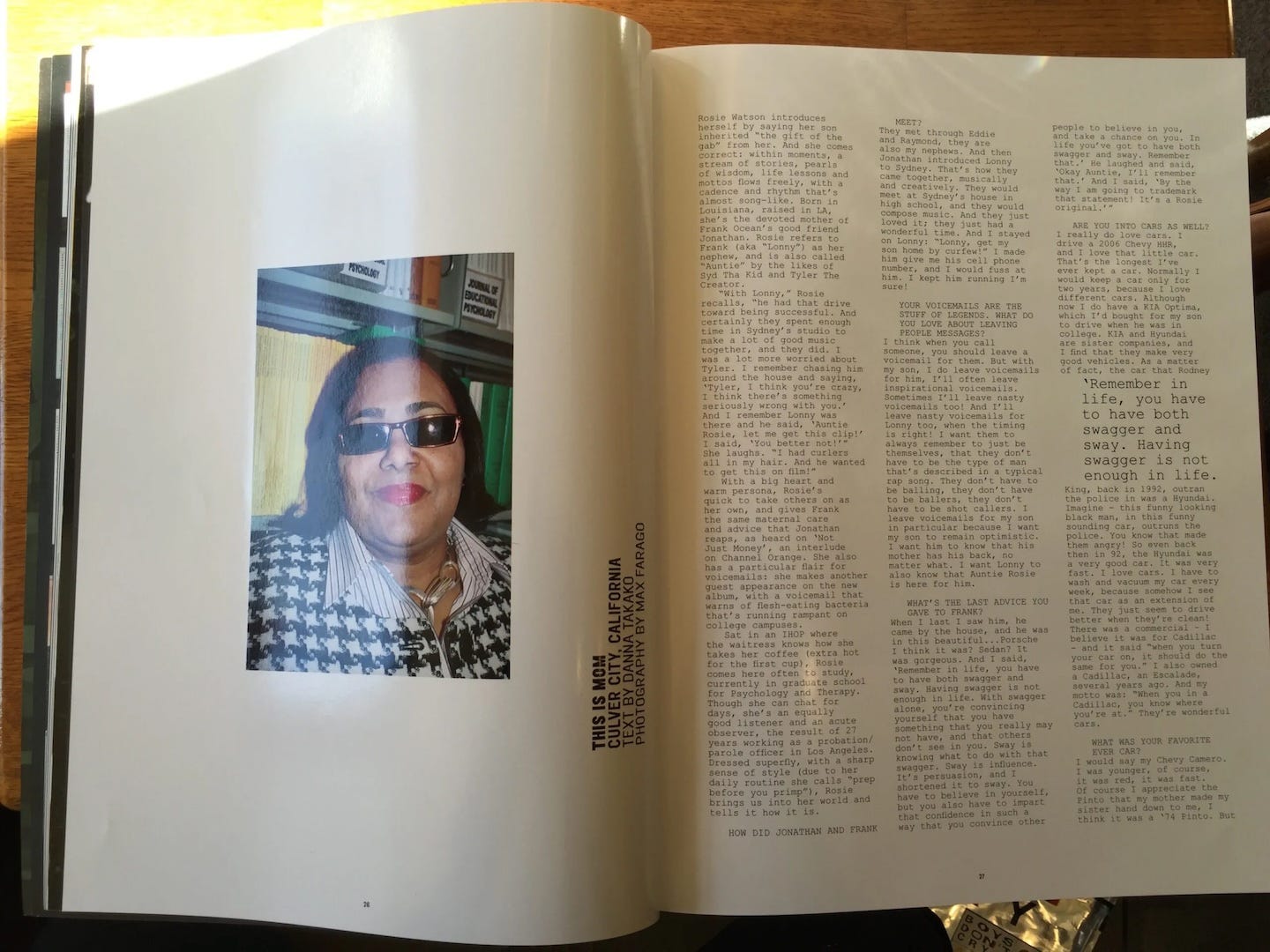

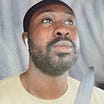
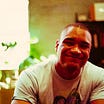
What a grand brotherhood and love you all share. Thank you for allowing us to witness how sacred it is. Much love to you all!
What a cool idea! Thank you for sharing this, I loved reading :)